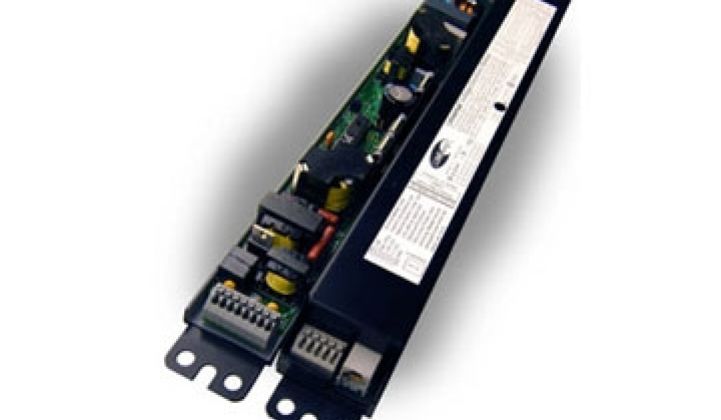If someone turned down the lights above your head by 20 percent, you probably wouldn't know it.
In fact, you can even go further, says Mike D'Amour, CEO of Lumenergi, which has concocted a dimmer system for fluorescent lights. The company conducted a two-week test at one location where the lights were turned on at 80 percent power and then slowly dimmed to lower levels.
"Not a single person mentioned it," he said.
Overall, Lumenergi says it can cut power consumption for lights by 50 percent to 70 percent.
The company is one of a growing number of startups focusing on ballasts, a commonly used, everyday product that you have probably never thought much about. The ballast is the component in a lamp that controls the flow of electricity, which in turn controls the amount of light emitted. HID Laboratories and Metrolight, for instance, have devised ballasts for high-intensity discharge lights, those things employed to light up big box retailers or tennis courts.
Lighting, of course, has gone from being obscure to front page news in the past few years. Lights consume 22 percent of the electrical power in the U.S. according to the Department of Energy and are often the largest source of electrical power consumption in buildings. To top it off, a lot of lighting technology is terrible: incandescent bulbs, now being phased out, were invented in 1879, and only use 5 percent of the power injected into them to create light. (I put it along with heaters and air conditioners in the IOU – inefficient, old, ubiquitous – family of applications.)
Conventional light bulbs, in some sense, can be considered the last vestige of the vacuum-tube industry. Even thermometers are digital. As a result, companies like Lumiette and Vu1 have begun to tout new types of bulbs.
And the control systems for lights aren't that much more modern. Typically, fluorescents only have two modes: off and on. An electrode heats up gases like mercury in the tube and light is produced. Dimmable fluorescents are something that commercial customers have wanted for a long time-roughly 85 percent of commercial buildings in the U.S. rely on fluorescent bulbs.
"A dimmable fluorescent is not an easy thing to do," he said.
So how do they do it? The company has replaced a lot of the analog components inside a ballast and replaced them with digital microprocessors. By going digital, Lumenergi can reduce the current going into the electrode without the light dropping off entirely. The digital ballast is then rigged into a computer network. The company's technology conceivably could also be used for light emitting diodes. D'Amour, though, argues the nation is still five to seven years from a tipping point on LEDs.
"Once you create the arc [inside the lamp] you have to moderate it," he explained. Other companies have come up with fluorescent dimmers but it's still not very widespread.
Dimming can be used in a variety of ways. For starters, Lumenergi recommends that building owners put their lights on at 80 percent as standard practice. Building owners can also link the system into demand response networks that will dim the lights automatically (but slowly) during peak periods. Task and spot lighting can be employed to dim lights in common areas, or those lit by natural sunlight.
"How much light do I need to light the floor for my feet," he asked.
Right now, the company targets its ballasts at companies with 20,000 square feet of illuminated office space. The more lights you have, the quicker the payoff. The company, though, will also soon come out with products tuned for offices in the 5,000 to 15,000 square foot range.
To permeate the market, it is taking a multi-pronged approach. It has teamed up with an energy services company that will incorporate it into its services offerings and the company is talking to a lighting company about incorporating the ballasts into lights coming off factory lines.
Join industry leaders and influencers at Greentech Media's Green Building Summit in Menlo Park, Calif., June 11.




